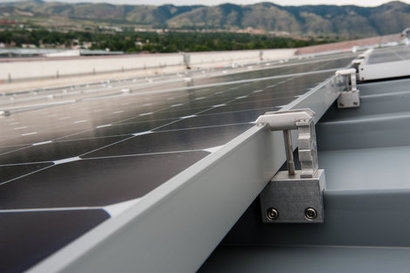
Solar energy development continues to expand in the Southeast US, increasing almost 30-fold over the last five years. However, the growth patterns remain varied depending on specific location. The Southern Alliance for Clean Energy report uses a ‘watts per customer’ metric which looks at the amount of installed solar relative to the total number of customers served. In this way it offers a unique analysis, with detailed information at the regional, state, and utility level, providing an insight in which utilities and states can be compared and contrasted.
Duke Energy Progress, Duke Energy Carolinas, and Georgia Power are the region’s current solar leaders based on the 2017 watts per customer ranking. Looking forward, the report calls out seven utilities with the highest forecasted solar growth by 2021. Duke Energy Progress and Georgia Power both make this list, as well, along with South Carolina Electric and Gas, Tampa Electric, Duke Energy Florida, Jacksonville Electric Authority, and City of Tallahassee. These utilities each serve more than 100,000 customers and are noted in the report as ‘SunRisers,’ due to their ambitious levels of planned solar growth.
In contrast to the ‘Sunrisers’, the report also identifies three major utility systems – Tennessee Valley Authority (TVA), Santee Cooper, and Seminole Electric Cooperative – as laggards, or ‘SunBlockers,’ who steadfastly stick with outdated plans for low levels of solar development over the next four years. For example, the monopolistic behaviour of TVA restricting solar choice across the Tennessee Valley.
Leading states like North Carolina, South Carolina, and Georgia have enacted strong policies that foster and encourage renewable energy growth. On the other hand, utilities in other Southeastern states – particularly Tennessee, Alabama, and Mississippi – continue to operate in a public policy vacuum. The slow pace of solar growth in these states, and the outdated thinking by utilities, leaves them with solar projections considerably below the regional average through 2021.
North Carolina has enjoyed a favourable policy environment and currently has the most solar photovoltaic (PV) capacity in the Southeast at 3 GW and second-most in the United States. Duke Energy Progress and Duke Energy Carolinas combined to contribute 83 percent of North Carolina’s solar in 2017. In particular, Duke Energy Progress will more than double their watts-per-customer ratio by 2021. North Carolina’s recent energy law (HB 589) is contributing to that continued growth.
Florida utilities are on a path to 4 GW by 2021 due to major announcements of utility-scale solar development in 2017 from Florida Power & Light, Duke Energy Florida, Tampa Electric Company, and JEA. Florida has been a strong regional leader in residential solar for the past 5 years and has seen the rooftop market further accelerate following two ballot initiatives in 2016. However, this rooftop (distributed generation) market is vulnerable in the Sunshine State as some utilities begin to revise their “net metering” approach. For example, JEA will compensate fuel-cost only for new solar installations after April 2018.
In Tennessee, the Tennessee Valley Authority was an early regional leader in small-scale, distributed solar. Recently, however, TVA has failed to respond to customer demand for solar, and their current Integrated Resource Plan (IRP), which calls for between 150 and 800 megawatts (MW) of large-scale solar by 2023, represents a very low solar target for a utility of TVA’s scale. Forecast at just 125 watts-per-customer by 2021, TVA’s commitment to solar is well below the forecasted Southeast average of 523 watts-per-customer. Despite being the second largest utility in the Southeast and serving 16 percent of customer accounts, TVA represented just six percent of total solar capacity in the Southeast in 2017.
For additional information:

